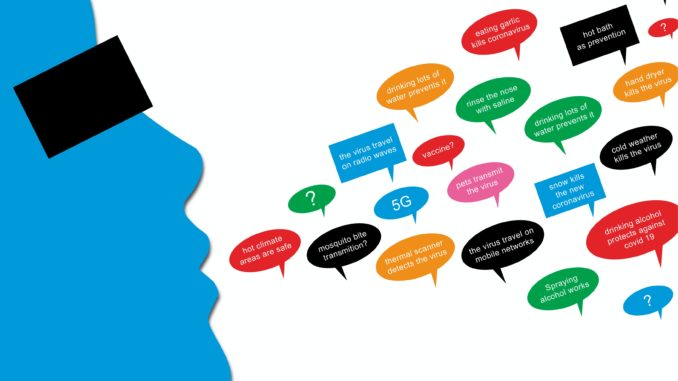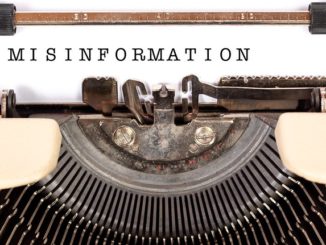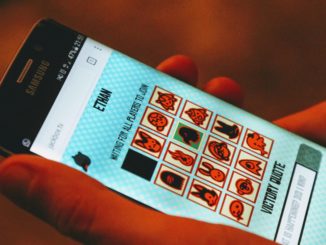
While the rest of Australia adhered to lockdown laws, a small but boisterous group of Melbournians picketed outside Victoria’s state parliament. With placards held high, protestors congregated to cancel lockdown, blaming vaccinations, 5G telecommunications, and Microsoft founder Bill Gates.
As the coronavirus has spread across the world at a ferocious rate, so too has fake news, conspiracy theories, and general misinformation. And although conspiracy theories are nothing new, the coronavirus has brought with it an ‘infodemic‘ of dubious information that spells negative consequences for the public.
Current conspiracies
The prevalent conspiracy at play purports 5G as the source of the coronavirus as 5G trials were first rolled out in Wuhan. Despite being disproven by fact-checker organisations, the theory led to 77 5G towers set alight in the UK, and has subsequently required addressing from government and health organisations.
COVID-19 does not spread via mobile networks or wireless technology. COVID-19 is spread through contaminated droplets by coughing or sneezing, or by contact with contaminated hands, surfaces or objects.
Find the facts: https://t.co/HbdohSPJs3 pic.twitter.com/WolbwTu46m
— NSW Health (@NSWHealth) May 11, 2020
Meanwhile, Bill Gate’s has become the target of a conspiracy that his US$300 million donation through the Bill & Melinda Gates Foundation for the development of a COVID-19 vaccine is a way of implanting and tracking the public with microchips. This claim, in addition to the release of viral video Plandemic by discredited medical researcher Judy Mikovits, has only fueled the pre-existing and well-established anti-vaxxer movement – so much so that in May the mention of ‘anti-vaccination’ in the media increased by 900%.
Online misinformation is such a large problem that the World Health Organization (WHO) have rolled out strategies to combat its spread. Their “Stop the Spread” campaign has been promoted in the UK, Africa, Asia, Europe, Middle East and Latin America. Meanwhile, WHO’s partnership with Rakuten Viber has resulted in the development of an interactive chatbot in an attempt to reach over 1 billion people in their native language.
WHO and @Viber fight #COVID19 misinformation with interactive chatbot in multiple languages
👉https://t.co/sMe1Ip3j6U pic.twitter.com/j8kDYp3TvC— World Health Organization (WHO) (@WHO) April 1, 2020
Reasonable people may think that only the gullible could believe such repeatedly disproven theories. However, misinformation abounds in the general public in less obvious ways, which almost anyone can believe and propagate because it sounds reasonable and factual.
If you’ve ever thought the virus is another version of the common flu, that you can’t catch it in warm conditions, or even that you should wear the same face mask each day, you’ve fallen for misinformation.
Working in a major trauma ward throughout the pandemic, Medical Resident, Simon Chadwick, has seen his fair share of medical misinformation. “The day to day management of patients with COVID or the day to day precautions that one would take all seemed like common sense … but this pandemic has revealed a lot of blind spots in the way we think in a common sense way about disease management,” Dr Chadwick said.
“For example, we have people who are walking around in the public with gloves on and they’re touching different surfaces with their gloves … and they’re really just using a big rubber wiper to spread whatever was on the first surface to the next,” he continued.
“[Whereas] really all they should be doing is washing their hands”.
Why do we believe misinformation?
From a physiological approach, it’s pertinent to understand the human brain is wired to take shortcuts whenever it can. When something sounds believable and is heard often enough, the brain tends to believe it. This phenomenon is called the illusory truth effect and people can be susceptible even when they know about the topic [pdf].
In the context of coronavirus, it’s also important to understand that research is continuously evolving as the scientific community works toward understanding the virus. The WHO’s COVID-19 database contains an expansive amount of literature that is updated daily with the latest international findings.
With knowledge updated so regularly, it makes it even more important to stay up to date with the latest public health advice and be discernible with where information is gathered from.
In 2019, the University of Canberra’s News and Media Research Centre’s (N&MRC) Digital News Report found that Australians are more likely to share incorrect news articles than the other 37 countries studied. While 62% of Australians surveyed indicated they were concerned about misinformation on the internet, only 22% chose not to share an article they were unsure was factual.
Meanwhile, the N&MRC’s report regarding media habits during COVID-19 revealed concern is causing Australians to access the news more than they did pre-coronavirus.
The report further showed two thirds of participants noticed misinformation via social media channels, while one third reported misinformation via news coverage and from word-of-mouth, respectively. The most accurate source was health authorities and scientists.

How to stop the spread
While large organisations, like WHO, fight to stop the spread of misinformation, there are many things to be done as an individual, which start with being critical of incoming media.
If you aren’t able to quit reading the news altogether, here are four ways to combat the illusory truth effect and stop the spread of information:
Choose reliable sources
If you aren’t familiar with the source, research it. Be wary of sites that are entirely dependent on advertising or pay their journalists based on article clicks, which can lead to the churning out of articles.
Don’t rely on social media
Just because it’s on Facebook, doesn’t mean it’s true. Don’t trust click-bait headlines and ensure the article contains trustworthy sources to back its claims.
Practice Mindfulness
The passive consumption of news is still consumption. Actively participate in what you read and take the time to learn about a topic from other (trustworthy) sources.
Understand your emotions
If what you read sparks strong emotion or elicits outrage, it could be a sign of manipulation. Do your due diligence and investigate the topic further to see if what the article is claiming is true.
By questioning the media you consume, you’re ensuring the safety of yourself and others by minimising the spread of misinformation.
“In every aspect of medicine, it’s important to listen to the latest advice, but it’s even more important in the case of COVID-19 because we had such a rapid escalation of morbidity and mortality,” Dr Chadwick said.
“Understanding of the latest medical advice is incredibly important and something I think every clinician worth their salt would advocate for.”
Unsure something you’ve read is factual? Stop the (misinformation) spread and check the facts at one of the following resources.
RMIT ABC Fact Check
World Health Organization (WHO)
Australian Government Department of Health





Be the first to comment